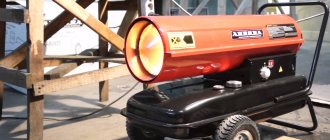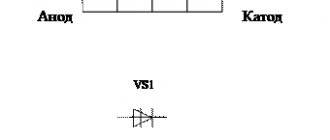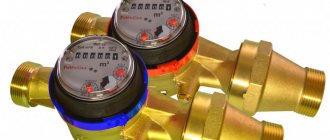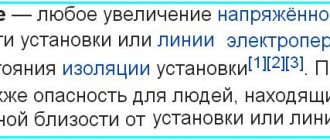Why should an RCD be of high quality and reliable?
Types of RCD
The high demands placed on the RCD will seem quite justified if you understand the purpose of this device. It has only one function: to turn off the power supply if there is a current leak of a certain (threshold) value. A current leak is not fraught with harmless economic damage, as it might seem at first glance, but with much more serious consequences - it always indicates that one of the following situations is occurring:
- a person or animal has been struck by an electric shock;
- due to insulation damage, contact has appeared between a current-carrying element and some grounded metal structure, which can lead to a fire;
- the grounded body of any device or equipment is energized, as a result of which the user who touches it runs the risk of receiving an electric shock.
Thus, no less than the user’s life depends on whether the RCD works at the right moment. Therefore, you should never skimp on the quality of this device.
Rules for choosing protective devices
Before purchasing an RCD, you can visit electrician forums to seek advice on the reliability of a particular manufacturer.
However, it is necessary to select the maximum and threshold current, number of poles, mounting scheme and other technical parameters strictly individually, based on the characteristics of the room and electrical wiring.
Selecting a device by power
The residual current device does not control the power consumption of connected devices, but has limitations on the maximum current flow.
Therefore, it is important to know how to choose an RCD based on power, so that when installing a wiring diagram, you can correctly take into account the energy consumption of each group of rooms. After all, if the rated current exceeds the threshold value for the device, it may burn out.
In apartments and private houses, a one-level or two-level RCD system is usually used. Each of them has its own characteristics.
Single-level circuit with a single RCD - the rated current is calculated based on the total power of devices simultaneously connected to the network.
For example, if the energy consumption of a washing machine is 2.4 kW, lighting is 1.1 kW and other devices are 2.8 kW, the RCD should pass (2400+1100+2800)/220=28 A.
In this case, with a rated current of the residual current device of 30 A, it will not burn out even with simultaneous operation of all household appliances and lighting.
When installing a single RCD, there may be a problem with finding the location of the breakdown. No matter in which room the current leak occurs, the entire apartment will lose electricity. Therefore, it is better not to save money and install an extensive protection system.
Branched single-level circuit diagram for installing an RCD . In such a situation, the wires from the meter are branched into several groups using a special bus, each of which is controlled by a separate protective device.
The calculation of the rated current for each RCD in a branched single-level system is carried out separately. This takes into account the maximum power of devices potentially connected to the device.
For example, when connecting only a washing machine with an energy consumption of 2.4 kW to the RCD, its rated current will have to be at least 2400/220 = 10.9 A.
A two-level RCD system is considered optimal from the point of view of safety and maintainability.
Its first level is installed at the entrance to the apartment and ensures fire safety. The rated current of this protective device must be not lower than the maximum capabilities of the electricity meter.
The second level of energy protection is assigned to certain consumer groups. These could be rooms, floors, extensions, street lighting, single sockets.
Level 2 devices usually cost less and have a lower current rating. The sum of its values for all installed devices must be less than that of the basic RCD at the entrance to the room.
For example, with second-level protective devices with a rated current of 10 A, 16 A and 16 A, you will need to install a device with a minimum capacity of 10+16+16=42 A at the common input.
The advantage of a two-level system is the ability to turn off individual groups of electrical appliances in the presence of current leakage. This allows you to repair equipment or find problems with insulation in the wall without cutting off power to the entire apartment.
What you need to know about RCDs
The main element of the RCD is a differential transformer consisting of three coils. The first is connected to the phase, the second to the neutral conductor. In this case, the currents flowing through these coils generate magnetic fields with oppositely directed lines of force.
If the currents in the phase and neutral conductors are equal, then the geometric sum of the field lines will be equal to zero, that is, they will simply destroy each other. If the currents differ, then a residual field will form in the device, which will excite a current in the 3rd coil, and it, in turn, will force the shutdown relay to operate.
Note. The current that causes the RCD to trip is called differential current; accordingly, the RCD is also called a residual current switch.
Thus, to put it in simple language, the RCD compares the currents at the input and output of the circuit connected to it, and if “debit and credit do not match,” it blocks the supply of electricity. Two important conclusions can be drawn from this:
- The RCD does not protect against overcurrents (short circuit) or overloads, since in such situations the currents at the input and output of the circuit remain equal (there is no leakage). Thus, this device cannot be considered as an alternative to a fuse or circuit breaker - at least one of these devices must be installed at the entrance to the apartment or house. Instead of separate RCDs and circuit breakers, you can use a so-called differential circuit breaker, in which both of these devices are combined.
- The RCD will not turn off if a person touches the live element and the neutral wire at the same time. In this case, there will be an electric shock, but there will be no leakage - all the current will remain in the circuit.
Therefore, even with an RCD, one must not lose vigilance: live parts must be protected by casings, potentially dangerous places must be fenced off and marked with warning symbols and inscriptions.
Classification of protective devices
Despite the simplicity of the internal structure, the choice of RCD models on the market is quite large. Each device has a certain set of technical parameters that cannot be adjusted during operation.
The manufacturer and size of the RCD do not affect the possibility of sharing within the same circuit. They can be mounted in any combination
To facilitate the selection of RCDs, options for classifying these devices should be considered.
- Based on the response speed of the mechanism, RCDs are divided into conventional and selective models. The former disconnect power contacts almost instantly, while the latter disconnect with a delay. Selective RCDs are used in multi-level systems where the sequence of operation is important.
- By type, RCD relays are divided into electromechanical, which breaks the contact mechanically, and electronic, which prevents the flow of current using a semiconductor circuit.
- By type of current . RCD type AC is disconnected from alternating current leakage, type A – from alternating and direct current.
- For additional functions : without and with network overload protection. RCDs with a short circuit or high current trigger mechanism are usually called difavtomats.
- According to the design . There are RCDs that are attached to a DIN rail, to the wall, as well as devices in the form of a socket, a portable device, or an adapter.
- By operating voltage : for 220V, 380V, combined.
- According to energy dependence . There are RCD models that are capable and unable to disconnect the power load in the absence of operating voltage.
- By the number of connected poles : two-pole and four-pole.
To choose the right RCD, it is not enough to know its technical characteristics. In order for the device to effectively perform its protective function, when purchasing it, you need to take into account the length of the home electrical wiring, the power of the connected devices and some other parameters.
Device characteristics
The most important characteristic of an RCD is the differential current setting, that is, the minimum value of the leakage current at which the device will disconnect the circuit. It is most often displayed in milliamps (mA) and can be 6, 10, 30, 100, 300 and 500 mA. This parameter is also called the sensitivity of the RCD: the lower it is, the more sensitive the switch is.
Another important characteristic is the response time of the device, that is, the duration of the period between the appearance of a leak and the tripping of the RCD. Obviously, this period should be as short as possible, but there are special RCDs that are triggered with a time delay. They will be discussed below.
The third parameter is the rated current of the RCD, that is, the maximum current that the device can withstand without failure.
The main parameters of the RCD printed on its body
I would like to note right away that depending on the manufacturer and country of manufacture, the number of parameters may be less.
1. Designations of terminals for connecting the device to the supply circuit.2.
Designations of the terminals for connecting the load to the device. 3. Device manufacturer . In an abbreviated version, the author's logo. 4. RCD model . Device model according to the manufacturer’s product range. Most often in an abbreviated version. 5. Rated current . The value of the current that the RCD can pass in normal “closed” mode. 6. Rated voltage : The voltage value for which the device is designed. 7. Rated current frequency : The current frequency value for which the RCD is designed. For one RCD there can be several current frequency values. 8. Differential operating current . The value of the differential current at which the RCD trips (opens). This value can be called the non-triggering current, that is, up to this value the RCD will operate in the “closed” mode. 9. Letter type of RCD, according to the type of differential operating current. Accepted letters: A, AC, B, S, G.
10. Schematic designation of the RCD type according to the type of tripping current;
11. Temperature characteristics of RCD. More often, the minimum temperature at which the RCD will remain operational is indicated; 12. RCD connection diagram. In itself, the scheme does not have much practical significance. However, it is important for instantly determining the type of RCD based on the dependence of the RCD’s performance on the power supply to it. Related articles: Zero protective and zero working conductors
Let's stop here.
There are two types of RCDs depending on the power supply of the device. An electromechanical RCD does not require power supply to the input terminals; such an RCD is triggered using the power of the differential current.
Electronic RCDs do not work without power supply to the input terminals. Their circuit contains a current amplifier that will not work without a third-party source.
Electromechanical RCDs are more stable and reliable.
13. The magnitude of the short-circuit current (short circuit). Let me remind you that an RCD without overcurrent protection does not “see” a short circuit and does not turn off the circuit when short circuit overcurrents appear. But with overcurrents, a large amount of thermal energy is released, and so, this value of the short-circuit current indicated on the device body shows what overcurrent value the RCD will withstand. 14. There are two badges left: Rosstandart and the fire resistance standard. The symbols are formal and mean that the RCD has passed all the necessary tests according to GOST.
Calculation of RCD parameters
When calculating RCD parameters, manufacturers take into account the following data:
- A current of 50 mA is considered dangerous to humans. Therefore, all RCDs designed for protection against electric shock have a differential current setting of no more than 30 mA. Switches with a higher setting are fire protection.
- The response time is ensured so that in the event of an electric shock, fibrillation of the heart muscle does not occur. A period of 20–40 ms is considered safe in this regard.
- Each current strength corresponds to its own heat generation power. For example, with a current leak of 500 mA, 100 W of heat is generated. Based on this, the differential settings. current of fire-fighting RCDs does not exceed 500 mA.
The lower the ignition temperature of the building material of the building, the lower the leakage current setting of the fire protection RCD should be.
Purpose of RCD and principle of operation
The main task of the RCD is to neutralize currents when various damage occurs in electrical installations. The residual current device is the most effective protective device. Unlike fuses or circuit breakers, RCDs are capable of breaking a circuit in a split second and saving a human life.
The danger is not only the possibility of direct electric shock. Sometimes simply touching the parts of live devices and devices is enough. Therefore, protective devices must operate in a timely manner. In order to correctly solve the problem of how to choose an RCD for a home, the conditions in which it will operate must be taken into account.
The operation of protective devices uses the phenomenon of electromagnetism. In this regard, the design of the RCD includes coils with a magnetic core connected to current-carrying wires that transmit electricity to the consumer. At the same time, a magnetic flux occurs, which is the arithmetic sum of the currents flowing through these conductors. In this case, the incoming currents have a positive value, and the outgoing currents have a negative value. In the absence of leaks and short circuits, they will be equal and add up to zero. This state of the circuit indicates the serviceability of the installed equipment.
In the event of a leak, a partial reverse flow of current occurs through the grounding conductors, which leads to an imbalance. The difference in differential currents causes the excitation of magnetic flux in the core. Its value will be proportional to the difference in electric current. When a certain threshold is reached, the device is triggered and turns off the power supply to consumers.
Functionality check
All modern RCDs have a button labeled “TEST” (test). When you press it, current is supplied to a special test wire, as a result of which the RCD, if it is operational, should turn off. But there are two important points to consider:
TEST button
- Turning off the RCD when you press the “TEST” button only indicates the integrity of the internal circuits, but this fact does not guarantee that the characteristics of the device (breaking leakage current and response time) comply with regulatory requirements. Therefore, do not lose your vigilance and if you purchase an RCD in a small store or market, ask to see the certificate.
- In the same way, the operation of a switch that has already been installed in place when this button is pressed does not mean that it is connected correctly. It is likely that when the “TEST” button is pressed, the device will turn off, and will ignore the real current leakage due to a connection error.
If you want to truly test the performance of the RCD, you need to invite a professional electrician and ask him to perform a current leak test. We specifically draw the reader’s attention to the fact that this operation should be performed by a specialist.
Features of operation: Once a month, it is recommended to check the RCD using the “ TEST” button.
Connecting RCDs and circuit breakers
If electrical consumers in a house or apartment are divided into several groups, each of which is protected by its own circuit breaker, then in order to save money, you can install one RCD for 2 - 3 such groups. Today, it is possible to organize a connection in this way in almost any household network: among modern RCDs with a differential setting. current 30 mA, there are models designed for fairly high rated currents - up to 100 A.
When selecting an RCD for a group of machines, you should take into account the rated current of not only the higher-level machine, but also the lower ones. Let's explain with examples.
Example 1
Scheme for example 1
Let us recall that in the general case it is recommended to install an RCD with a rated current that is one step higher than the rated current above the installed circuit breaker. But in this case, as you can see, each of the two RCDs does not exceed the rated current, but on the contrary is inferior to the input circuit breaker: its rated current is 50 A, while the rated current of each of the RCDs is only 40 A.
However, the diff switches current are reliably protected from overload: the total rated current of the machines connected to each of them is only 32 A (2x16 A), which is 20% less than the rated current of the RCD of 40 A.
Example 2
The following scheme is not so reliable:
Scheme for example 2
The rated current of the 1st RCD is 25 A and the input circuit breaker with a rated current of 40 A does not protect it. But there is no risk of overloading this device, since the current passing through it cannot exceed 22 A (6 and 16 A circuit breakers are connected to the RCD). But the 2nd RCD, designed for a rated current of 40 A, can burn out: it is not protected by the circuit breakers connected to it, since their total rated current is 58 A (3x16 + 10), and the input circuit breaker is protected, so to speak, end-to-end .
If there is an overload, then before the input circuit breaker is triggered, a current higher than the rated one will flow through RCD No. 2, as a result of which it may fail. It is recommended to either install an RCD with a higher rated current (the next level is 50 A), or protect it with an additional circuit breaker with a rated current one step lower (32 A).
Example 3
But this scheme is clearly incorrect:
Scheme for example 3
Both RCDs with a rated current of 40 A are not protected by either the upstream circuit breaker (50 A) or the downstream ones (total rated currents are 57 and 48 A).
How to choose an RCD. Calculation example
Hello, dear readers of the site elektrik-sam.info!
In the previous two articles we looked in detail at how to choose an RCD:
Now it's time to consolidate the information received with a specific example.
In residential apartments and houses, it is advisable to use residual current devices installed in two levels:
Level 1. At the entrance to the apartment, immediately after the input circuit breaker, it is advisable to install a fire protection RCD of 100 or 300 mA (to protect against possible fire if the insulation is damaged and naturally aging).
Level 2. In order to ensure better electrical safety and at the same time maximum uninterrupted power supply, it is advisable to install a separate RCD for each group of consumers. For these purposes, RCDs with a leakage current setting of 10 and 30 mA are used.
So, let's look at the issue of selecting and calculating an RCD using a specific example.
Let's assume that we have a residential building in which the electrical wiring is divided into the following consumer groups:
— a two-pole C32 circuit breaker is installed at the input. The house is new, the input is made with a 3x6 mm2 cable, the transformer substation is located several blocks away.
— washing machine: automatic C16, cable 3x2.5 mm2, length 8 m, power 1850 W;
— air conditioner: automatic C16, cable 3x2.5 mm2, length 12 m, power 1800 W;
— kitchen sockets: automatic C16, cable 3x2.5 mm2, length 8 m, power 3000 W;
— sockets in room 1: automatic C16, cable 3x2.5 mm2, length 9 m, power 2000 W;
— sockets in room 2: automatic C16, cable 3x2.5 mm2, length 12 m, power 2000 W;
— lighting: automatic B10, cable 3x1.5 mm2, length 19 m, power 900 W;
Let's supplement the existing wiring diagram of a residential building with residual current devices.
Let's start the calculation with the washing machine, it was made by a separate group and works in a humid environment.
As we remember, the approximate value of the leakage current in an electrical installation, which is the sum of the leakage current in the electrical receiver and the leakage current in the network, can be calculated using the formula:
IΔ= IΔep + IΔnetworks =0.4 Icalc+0.01Lwires, where
IΔep — leakage current of the electrical receiver, mA;
IΔnetworks—mains leakage current, mA;
Icalc — calculated load current in the circuit (calculation in the AB section), A;
Lwire - length of phase conductor, m.
The rated differential breaking current must be at least three times the total leakage current of the protected circuit of the electrical installation IΔ:
IΔn > = 3 IΔ.
3 IΔ=3x3.45=10.35 mA.
For wet groups made as a separate line, an RCD with a setting of 10 mA is installed. In our case, the calculated value of the RCD setting turned out to be almost equal to 10 mA, so for the washing machine we select an RCD with a rated differential breaking current of 10 mA.
RCDs with a differential current setting of 10 mA are usually produced with a rated current of no more than 16 A, so we choose the rated current of the RCD equal to the rating of the machine, i.e. 16A.
Since the electrical wiring is single-phase, we choose a two-pole RCD; type A, electromechanical, with rated conditional short circuit current Inc=6000 A.
If funds allow and it is possible to install an electrical panel on a large number of modules, then it is advisable to install a separate RCD for each group of consumers. For them, use an RCD with a differential current setting of 30 mA.
Using the same formula that we calculated for the washing machine, we can calculate the total leakage current for each group to check whether it will not exceed one third of the RCD setting. Those. a third of 30 mA is 10 mA. If the calculation exceeds, then the group may have to be divided into two.
In practice, they often do things differently. All devices in the apartment’s electrical network are not connected at the same time, since the total power is limited by the input machine . In our example, 32A for a wire with a cross-section of 6 mm2 is 7 kW. The apartment is small - 2 rooms. Therefore, for the remaining groups, except for the washing machine, you can try installing one common RCD with a differential current setting of 30 mA.
Select the rated current of the RCD one step higher than the rating of the input circuit breaker, i.e. 40 A. Since the sum of the denominations of the machines in groups exceeds the denomination of the input machine.
If the RCD trips, then for the remaining consumer groups, instead of one 30 mA RCD, install two 30 mA RCDs. For example, combine the kitchen sockets and lighting under one RCD, and the sockets of two rooms and the air conditioner under another. It is possible to remove the lighting group from RCD protection.
This is usually sufficient for the normal functioning of the RCD. The disadvantage of such a circuit is that if the RCD is triggered, all the groups that it protects are de-energized, and it becomes more difficult to find the fault that led to the RCD shutdown.
After the input circuit breaker, you can install a fire protection RCD with a differential current setting of 100 mA and a rated current of 40 A.
Selectivity for the rated residual current will be maintained since 100 mA is more than three times greater than 30 mA (Level 2 RCDs installed in groups). To ensure time selectivity, it is necessary to use an S type incoming RCD.









